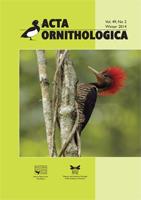Animal constructions represent an extension of the individual phenotype upon which selection may act to create discernable population level patterns. Here we explore global patterns in woodpecker cavity entrance orientation to infer underlying selective forces that shape cavity construction. We performed a comprehensive systematic meta-analysis of woodpecker cavity entrance orientation from 80 populations of 23 species of woodpeckers and other picids throughout the Northern Hemisphere. We show that woodpecker cavity entrance orientation is typically nonrandom, suggesting that selection acts on cavity entrance orientation. The proportion of studies in which significant results were found increased significantly with sample size, and we estimated that more than half of the studies with a sample size of at least 100 showed non-random cavity entrance orientation. Populations occurring at higher latitudes preferred a more southerly orientation, indicating that temperature or something related thereto may be driving cavity entrance orientation. Differences between Eurasia and North America in orientation are consistent with this hypothesis. Taxonomic relationships were not a significant predictor of the strength of orientation and thus unrelated woodpecker populations respond similarly to regional environmental drivers. Our results demonstrate latitudinal and continental patterns that strongly suggest regional climate as a selective force on cavity entrance orientation. Further work utilizing available long-term data sets throughout the world promises to uncover possible fitness consequences of cavity orientation on woodpeckers.
How to translate text using browser tools
1 December 2014
Global Trends in Woodpecker Cavity Entrance Orientation: Latitudinal and Continental Effects Suggest Regional Climate Influence
Lukas Landler,
Michelle A. Jusino,
James Skelton,
Jeffrey R. Walters
ACCESS THE FULL ARTICLE

Acta Ornithologica
Vol. 49 • No. 2
December 2014
Vol. 49 • No. 2
December 2014
animal architecture
building alignment
cavity entrance orientation
nest holes
nest site selection
Picidae
primary excavators




